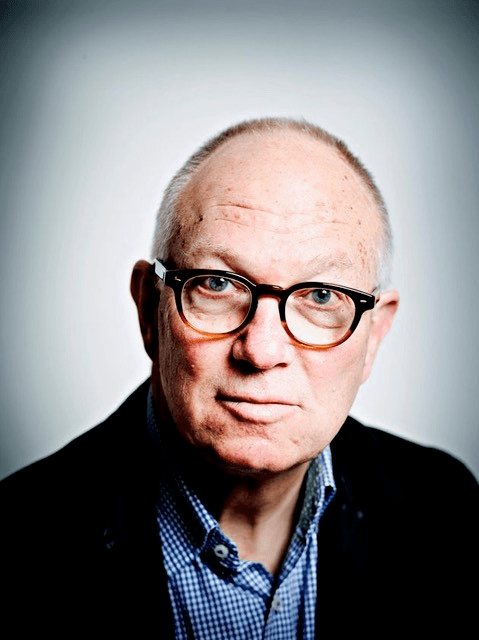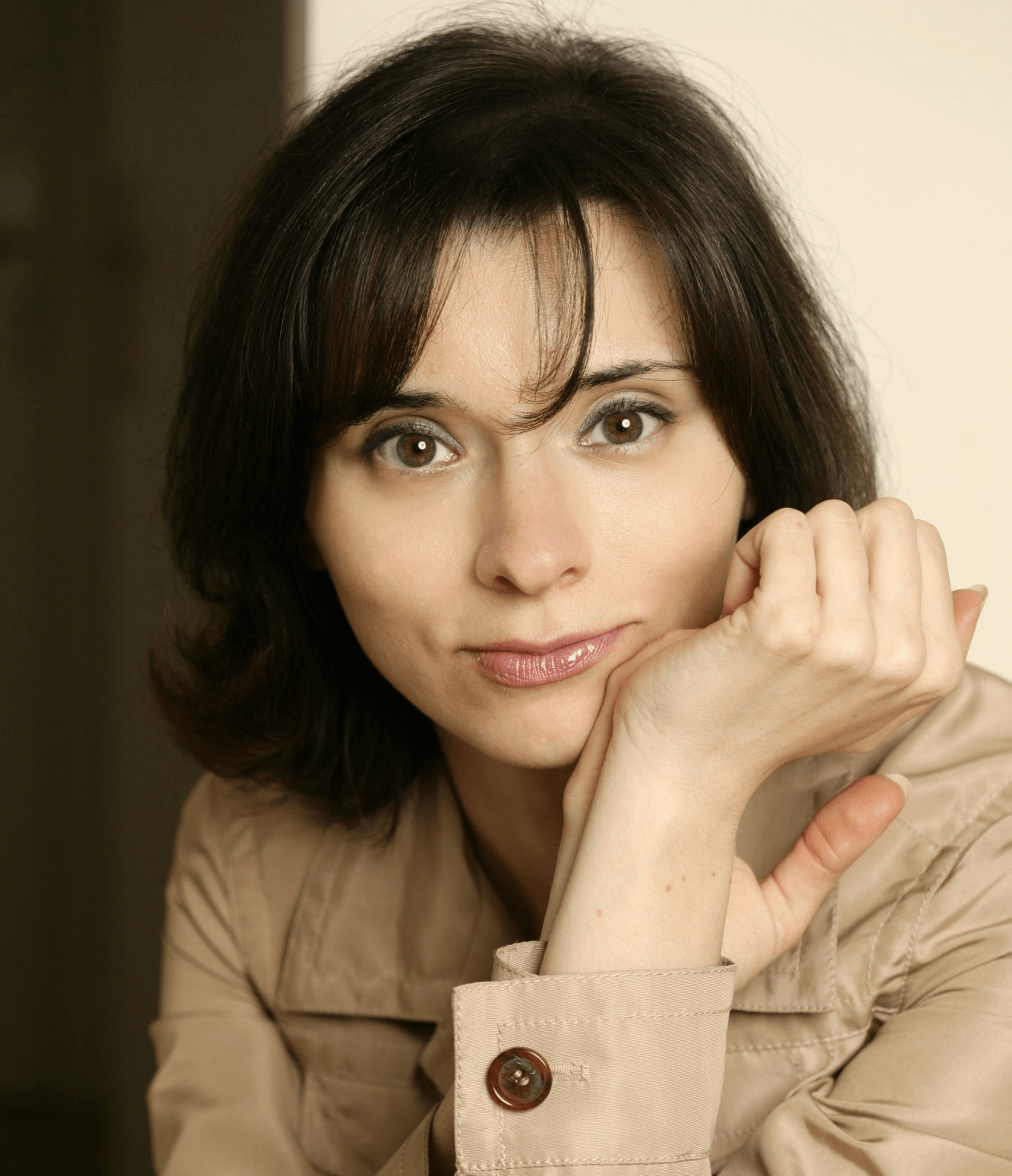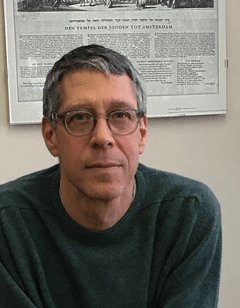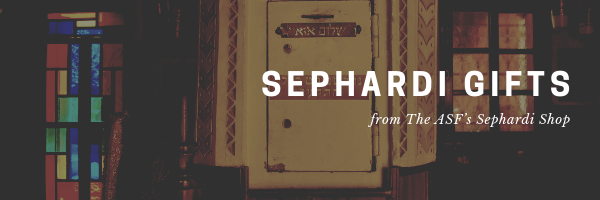In Memory of Manouchehr Bibiyan, A”H, a pioneering Persian Jewish entertainment entrepreneur who was “Iran’s first and most successful modern pop-music recording producer” before emigrating to America and creating Jaam-e-Jam .
Click here to dedicate a future issue in honor or memory of a loved one
Upcoming Events ◊ ASF Sephardi Shop ◊ Donate ◊ Sephardi Ideas Monthly ◊ ASF IJE ◊ ASF Sephardi House ◊ Archive
The Sephardi World Weekly is made possible by Daniel Yifrach, Rachel Sally, Professor Rifka Cook, Maria Gabriela Borrego Medina, Rachel Amar, Deborah Arellano, & ASF VP Gwen Zuares!
Join the Sephardi World Weekly Global Design Competition! Deadline 7 March
“The 17th-Century Heretic We Could Really Use Now”
By Ian Buruma, The New York Times
According to Ian Buruma, author of Spinoza: Freedom's Messiah, the latest instalment in Yale University’s “Jewish Lives” series:
Living now as we do in a time of book-banning, intellectual intolerance, religious bigotry and populist demagoguery, [Spinoza’s] radical advocacy of freedom still seems fresh and urgent.
An enlightenment optimist:
Spinoza was convinced that all people, regardless of their religious or cultural background, were imbued with the capacity to reason and that we should seek the truth about ourselves and the world we live in.
While Spinoza resisted the religious ideologues of his time, the primary challenge to free thought and expression in the West today often come from other quarters:
In the United States, and increasingly in many parts of Europe, other kinds of ideological thinking… such as social or racial justice, put pressure on intellectual freedom as well…. We see universities torn by ideological struggles that make free inquiry increasingly difficult. Once again there is a conflict between the scientific and the ideological approaches to truth.
To move forward, argues Buruma, we would do well to look back to one of the founding fathers of modern liberal polities:
The freedom to act and think rationally, not dogmatically, is by far Spinoza’s greatest legacy. It is the only way to combat the threat of irrational ideas, stirred up hatreds and the confusion of science and faith. And it may be the only way to save our Republic.
The ASF and Jewish Lives at Yale University Press are hosting Why Spinoza Matters Now: Truth and Freedom in America Today with Ian Buruma, Steven Nadler, Rebecca Newberger Goldstein, & Clémence Boulouque on Sunday, 31 March at 3:00PM EST In-Person @ the ASF - Center for Jewish History.
Sign-up Now!
“VIDEO: A sign of Jewish unity as Ashkenazi Jews celebrate the Sephardi language, Ladino”
By Moishele Alfonso, Forward
Moishele Alfonso at the ASF's 7th Annual New York Ladino Day, 21 January 2024, Center for Jewish History
(Photo courtesy of Zakaria Siraj)
Yiddish speaker and teacher Moishele Alfonso recently “attended the New York Ladino Day: a celebration of Sephardi culture at the Center for Jewish History, presented annually by the American Sephardi Federation.” But Moishele didn’t only attend the event, he reported on it. In Yiddish, with English subtitles.
In his report, Moishele shares (in Yiddish) how “Rabbi Marc Angel gave a talk about the optimism of Ladino civilization” and Elizabeth Graver discussed her novel Kantika, inspired by the life of her Istanbul-born grandmother, Rebecca. Since “Ladino Day is, of course, not just for Sephardim. Ashkenazis also came – and even Yiddish speakers!”
Moishele stood with a handwritten sign at the event inviting Yiddish-speakers to share their experience. Avrom (Albert) Rosenblatt answered the challenge, also in Yiddish:
Yes this is my first time and it’s very enjoyable. I’m really happy to be here… It’s a contribution that Ladino speakers have given to humanity and it deserves to be studied.
“Sephardic Torah from the Holy Land | An Unlikely Agnon Encounter: One Morning on the Herzliya-Jerusalem Train”
By Rabbi Daniel Bouskila, The Jewish Journal
“Straight Ahead: An Omni-American Future, Fighting Bigotry Together,” Minton’s Playhouse/The Cecil in Harlem, NYC, 29 November 2022
(Photos Courtesy of New York Social Diary)
Rabbi Daniel Bouskila, Director of the Sephardic Educational Center, recently made Aliyah with his wife. The new Israeli couple lives in the coastal town of Herzliya, and R’ Bouskila commutes to work in Jerusalem’s Old City by taking the train. A longtime student of the Nobel-Prize winning work of Shai Agnon, Bouskila was recently on the train and reading Agnon when he found himself engaged in an unexpected but very Israeli conversation:
As I sat on the train reading Agnon’s A Guest for the Night… a gentleman boarded the train and sat opposite me. I was dressed in my signature ‘Rabbi Bouskila rabbinic garb’ – jeans, sneakers, a black sweater and a scarf. The gentleman opposite me was dressed in what Israelis call ‘Haredi garb’ – a long black coat and a black fur hat. I’m clean shaven, he had a beard and long sidelocks. I held an Agnon book, he held a volume of Talmud. Can we get more stereotypical?!
Then, as R’ Bouskila tells the story, magic happened:
He looked at me with a warm smile and asked: ‘Are you a teacher of literature?’
‘Sort of,’ I responded, shocked but pleasantly surprised by his question. ‘Not formally as my vocation, but literature – especially Agnon – forms a very big part of my teachings.’
‘That’s great. It’s good to see that there are still people teaching Agnon. He was so brilliant, his literary style was so unique, and he has so much to say to us, still today.’
And for the remainder of the ride, the train was transformed into an unconventional but enchanted Beit Midrash:
For the next 45 minutes, the two of us had the most fascinating intellectual and heartfelt exchange – about Agnon, Hebrew literature, music, art, Torah and Israeli society. The commuters were listening and watching in amazement how these two strikingly different looking individuals were engaged in such deep thought and conversation.
R’ Bouskila’s bottom line?
The train in Israel is a magical place, and Am Yisrael – jeans and black coats together – are a magical people.
~~~~~~~
Please also support the ASF with a generous, tax-deductible contribution so we can continue to cultivate and advocate, preserve and promote, as well as educate and empower!
~~~~~~~
Spinoza: Freedom's Messiah (Jewish Lives)
By Ian Buruma
Baruch (Benedictus) Spinoza (1632–1677) was a radical free thinker who led a life guided by strong moral principles despite his disbelief in an all-seeing God. Seen by many—Christians as well as Jews—as Satan’s disciple during his lifetime, Spinoza has been regarded as a secular saint since his death. Many contradictory beliefs have been attached to his name: rationalism or metaphysics, atheism or pantheism, liberalism or despotism, Jewishness or anti-Semitism. However, there is no question that he viewed freedom of thought and speech as essential to an open and free society.
In this insightful account, the award-winning author Ian Buruma stresses the importance of the time and place that shaped Spinoza, beginning with the Sephardim of Amsterdam and followed by the politics of the Dutch Republic. Though Spinoza rejected the basic assumptions of his family’s faith, and was consequently expelled from his Sephardic community, Buruma argues that Spinoza did indeed lead a Jewish life: a modern Jewish life. To Heine, Hess, Marx, Freud, and no doubt many others today, Spinoza exemplified how to be Jewish without believing in Judaism. His defense of universal freedom is as important for our own time as it was in his.
Maimonides, Spinoza and Us: Toward an Intellectually Vibrant Judaism
By Rabbi Marc D. Angel
A challenging look at two great Jewish philosophers, and what their thinking means to our understanding of God, truth, revelation and reason. Moses Maimonides (1138–1204) is Jewish history’s greatest exponent of a rational, philosophically sound Judaism. He strove to reconcile the teachings of the Bible and rabbinic tradition with the principles of Aristotelian philosophy, arguing that religion and philosophy ultimately must arrive at the same truth. Baruch Spinoza (1632–77) is Jewish history’s most illustrious “heretic.” He believed that truth could be attained through reason alone, and that philosophy and religion were separate domains that could not be reconciled. His critique of the Bible and its teachings caused an intellectual and spiritual upheaval whose effects are still felt today. Rabbi Marc D. Angel discusses major themes in the writings of Maimonides and Spinoza to show us how modern people can deal with religion in an intellectually honest and meaningful way. From Maimonides, we gain insight on how to harmonize traditional religious belief with the dictates of reason. From Spinoza, we gain insight into the intellectual challenges which must be met by modern believers.
~~~~~~~
Upcoming Events or Opportunities
The American Sephardi Federation and Jewish Lives at Yale University Press present:
Why Spinoza Matters Now: Truth and Freedom in America Today
Join us for a lively and timely discussion celebrating the launch of Ian Buruma’s new book, Spinoza: Freedom’s Messiah. Buruma will be joined on the panel by Steven Nadler, Rebecca Newberger Goldstein, & Clémence Boulouque
Sunday, 31 March at 3:00PM EST
In-Person @ the ASF - Center for Jewish History
Sign-up Now!
Tickets: $15-$500
350 years after his death, the philosophy of Baruch Spinoza remains vitally relevant — especially in this period of deep political division and with the threat to liberal democracy not only in Europe and elsewhere, but right here at home. Spinoza was the most open and important proponent of democracy, toleration, politics free from religious sectarian interference, and freedom of expression in the early modern period. He was also “cancelled” (Herem) by Amsterdam’s Jewish community.
See this New Yorker review, “Baruch Spinoza and the Art of Thinking in Dangerous Times,” as well as Buruma’s latest, “The 17th-Century Heretic We Could Really Use Now,” in The New York Times

Bard College Professor Ian Buruma, author of Spinoza: Freedom's Messiah (Jewish Lives – Yale University Press)

Moderator, Columbia University Professor Clémence Boulouque, author of Another Modernity: Elia Benamozegh’s Jewish Universalism (Stanford University Press)

University of Wisconsin-Madison Professor Steven Nadler, author of Spinoza: A Life (Cambridge University Press) and Menasseh ben Israel: Rabbi of Amsterdam (Jewish Lives – Yale University Press)

Dr. Rebecca Newberger Goldstein, author of Betraying Spinoza: The Renegade Jew Who Gave Us Modernity (Jewish Encounters Series)
~~~~~~~
The American Sephardi Federation presents:
Convergence: Arabic, Hebrew, and Persian Calligraphy in Conversation
Featuring the multilingual art of Ruben Shimonov Convergence creates a visual world where Hebrew, Arabic, and Persian languages interact with, and speak to, one another; a world where stylized letters and words dance together on the page; a world where cultures, religions, communities, and philosophies intersect.
Juxtaposing cognates from these ancient West Asian languages, artist Ruben Shimonov encourages the viewer to explore the deep-rooted connections between these tongues, as well as the multilayered and transnational identity of the artist himself.
On View in the Leon Levy Gallery
through 31 May 2024
@ the Center for Jewish History
~~~~~~~
The American Sephardi Federation and Mimouna Association’s Rebuilding Our Homes Project present:
Re-Creation: Judaica by Moroccan Muslim Artisans
Explore the exhibition of Judeo-Moroccan art, Moroccan Judaica, cultural and religious objects, including Menorot, Mezuzot, Yads, Shabbat Candleholders, Seder Plates, Hallah Covers, and much more.
On View through 31 May 2024
@ the Center for Jewish History
As Moroccan Jewish populations largely left the mellahs (Jewish quarters) in the latter half of the 20th century, there was a danger that not only designs but even the traditional artisanal techniques needed to create them would be lost. Passed down from one artisan to another and perfected over time, these designs and techniques. ranging from vibrant patterns to intricate metalwork and soulful wood carvings, are expressions of Moroccanity and reflect the individual character of each city. The materials and craftsmanship of Rabat are different than Fez, and Essaouira is distinct from both.
Mimouna Association and the American Sephardi Federation’s Rebuilding Our Homes Project, a multi-year USAID-supported New Partnerships Initiative, brought three notable experts-Ms. Zhor Rehihil, Ms. Deborah Koenigsberger Gutierrez, and Ms. Meryem Ghandi to train Moroccan Muslim artisans in the history of Judeo-Moroccan art and guided them in re-creating Moroccan Judaica, which encompasses a diverse array of cultural and religious objects, including Menorot, Mezuzot, Yads, Shabbat Candleholders, Seder Plates, Hallah Covers, and much more.







